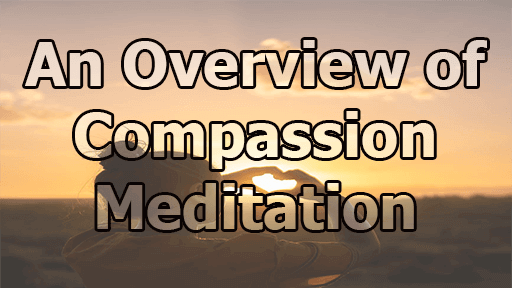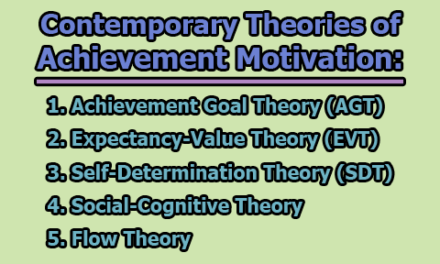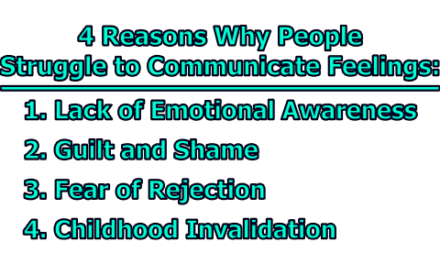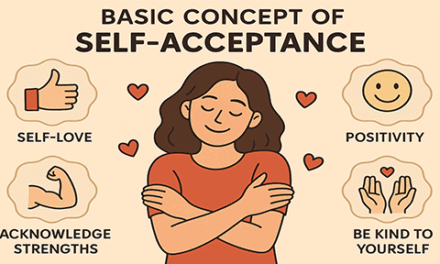An Overview of Compassion Meditation:
Compassion is a powerful emotional state that involves recognizing the shared human experience of suffering, flaws, and vulnerability, and responding with kindness and a desire to help (Goetz et al., 2010). The word “compassion” itself originates from the Latin root meaning “to suffer together,” emphasizing the connection and empathy we feel toward others in pain (Spännäri et al., 2023). Far from being a weakness, compassion is a mark of inner strength and resilience—a point echoed by the Dalai Lama (1990), who described compassion and tolerance as essential virtues, not signs of fragility. Compassion meditation is a practice specifically designed to nurture this vital human capacity. Research shows that regular compassion meditation can significantly improve emotional well-being by reducing anxiety, burnout, and self-criticism. It also promotes empathy and strengthens social bonds through measurable changes in both brain activity and behavior. Simple daily practices—such as reciting compassionate mantras or engaging in tonglen (a traditional Tibetan meditation technique that focuses on breathing in others’ suffering and breathing out relief)—can gradually transform compassion into a natural, habitual response. This article explores an overview of compassion meditation, including its core principles, psychological benefits, and practical ways to incorporate it into daily life.
What is Compassion Meditation?
Compassion meditation is a contemplative practice aimed at reducing feelings of isolation and self-centeredness by helping individuals recognize that suffering is a shared human experience (Gilbert, 2005). This form of meditation invites us to connect deeply with both our own pain and the suffering of others, awakening the innate capacity for compassion that exists within each of us.
Often referred to as karuṇā meditation, compassion meditation is rooted in Buddhist philosophy and centers on cultivating kind and compassionate thoughts toward those who are struggling. The practice fosters a sense of common humanity, encouraging acceptance of pain, distress, and discomfort as natural parts of life.
While compassion meditation shares similarities with other contemplative practices, it also has distinct features. For example, mindfulness meditation focuses on maintaining nonjudgmental awareness of the present moment, whereas loving-kindness meditation (also known as mettā meditation) emphasizes developing feelings of warmth and goodwill toward oneself and all living beings (Hofmann et al., 2011). Although each type of meditation has a unique focus, they are all associated with increased positive emotions, greater empathy, and enhanced immune function (Hofmann et al., 2011).
Core Principles of Compassion Meditation:
Compassion meditation is built on a foundation of psychological insight, ethical reflection, and contemplative practice. Its aim is to foster emotional balance, reduce suffering, and cultivate a genuine concern for the well-being of others. The following core principles guide the practice of compassion meditation:
- Recognition of Shared Humanity: At the heart of compassion meditation is the understanding that suffering is a universal experience. Regardless of background, culture, or circumstance, all human beings encounter pain, loss, fear, and disappointment. This recognition helps dissolve the illusion of separation and fosters a deep sense of connection to others. By reminding ourselves that others, like us, seek happiness and wish to avoid suffering, we develop empathy and openness.
- Awareness of Suffering (Self and Others): A central goal of compassion meditation is to become more aware of suffering—both our own and that of others—without turning away or becoming overwhelmed. This involves training the mind to notice emotional pain, discomfort, or distress with calmness and clarity. Rather than suppress or ignore suffering, we allow ourselves to experience it with presence and equanimity, which creates the conditions for a compassionate response.
- Cultivation of a Compassionate Intention: Compassion meditation is not merely about feeling sympathy—it is an active process of wishing to alleviate suffering. Practitioners intentionally cultivate thoughts and feelings such as: “May I (or others) be free from pain,” or “May I (or others) find peace and healing.” These intentions, often repeated silently or in the form of mantras, strengthen the mental habit of compassion and make it more accessible in daily life.
- Self-Compassion: A key element of compassion meditation is extending kindness and understanding to oneself. Many people find it easier to feel compassion for others than for themselves, especially when they struggle with guilt, shame, or self-criticism. Self-compassion involves treating oneself with the same warmth and care one would offer a friend. It recognizes that personal suffering is not a failure, but part of the human experience.
- Non-Judgment and Emotional Balance: Compassion meditation teaches practitioners to respond to suffering without judgment or aversion. Instead of blaming others or ourselves, the practice encourages a balanced emotional stance that combines awareness with kindness. This balanced view helps prevent emotional exhaustion and burnout, which is especially important for caregivers, educators, and healthcare professionals.
- Regular Practice and Habit Formation: Compassion, like any skill, becomes stronger with practice. Through repeated engagement in meditation, visualization, and reflection, the brain begins to form new neural pathways associated with empathy and care. Over time, this leads to more spontaneous and stable compassionate responses in everyday situations.
- Expansion of Compassion Beyond Close Circles: Initially, compassion meditation often begins with someone close to us—a loved one or even ourselves—but gradually it expands to include neutral individuals, difficult people, and eventually all sentient beings. This progression trains the mind to cultivate unconditional compassion, free from preference, bias, or judgment.
Together, these principles support a deeply transformative practice. Compassion meditation not only enhances emotional wellbeing but also promotes healthier relationships, resilience in the face of adversity, and a more caring society.
How to Use Karuṇā Meditations as Interventions:
Compassion meditation, often referred to as karuṇā meditation, offers a powerful approach for emotional healing and transformation. As an intervention, it can be used on its own or integrated alongside other therapeutic techniques to support mental and physical well-being. Its flexibility and accessibility make it a valuable resource for clinicians, educators, healthcare providers, and individuals seeking inner balance and greater social connectedness.
Integrating Compassion Meditation into Therapeutic Settings: Compassion-based meditations can be incorporated into a variety of therapeutic settings. Mental health professionals may guide clients through short compassion meditations during sessions to help regulate emotions, reduce self-judgment, and create a foundation for psychological insight. These practices can also be assigned as homework to reinforce healing between sessions. For example, clients may be asked to practice compassion meditation during routine moments in daily life—such as while commuting, walking, or waiting in line—as a way of cultivating mindfulness and emotional resilience in real-world environments.
Tonglen (A Transformative Technique): A widely known form of compassion meditation is tonglen, a Tibetan term that means “giving and taking.” This practice involves visualizing the suffering of others while inhaling and then breathing out relief, healing, or comfort (Drolma, 2019). The core idea behind tonglen is to mentally “take in” others’ pain on the in-breath and “send out” hope, love, and peace on the out-breath. This intentional reversal of the typical human tendency to avoid pain and seek pleasure challenges deeply ingrained habits of self-centeredness (Drolma, 2019). Over time, this practice fosters humility, compassion, and an expansive view of life—one that is grounded in interconnectedness rather than isolation or avoidance.
Applications in Clinical and Educational Contexts: Karuṇā meditations are versatile and can be adapted to many environments. In clinical settings, research has shown that compassion-focused practices are effective in reducing symptoms of depression, anxiety, anger, and social withdrawal (Goetz et al., 2010). They can be particularly helpful for individuals struggling with social anxiety, as the practice redirects attention away from fear of judgment and toward a shared experience of suffering, fostering a sense of connection and belonging (Spännäri et al., 2023).
In healthcare environments, compassion training is increasingly used to support healthcare workers who face high levels of stress and burnout. Regular practice of compassion meditation has been shown to boost resilience, improve emotional regulation, and reduce burnout among providers (Goetz et al., 2010). These benefits not only enhance personal well-being but also improve patient care and communication.
In educational settings, compassion meditation is being introduced to help students become more aware of their emotions and develop empathy toward others. Such interventions have been associated with reductions in bullying behavior, improved peer relationships, and greater emotional regulation. Teaching compassion as a life skill empowers young people to respond to conflict with understanding rather than aggression.
Benefits for Physical Health and Body Image: Beyond its psychological benefits, compassion meditation has also been linked to improvements in physical health. Studies have found that compassion-based interventions can reduce chronic pain and the perceived severity of pain, as well as alleviate negative body image issues (Goetz et al., 2010). These effects are believed to result from the calming influence of compassion on the nervous system and the shift from self-criticism to self-acceptance.
Positive Impact on Social Behavior: Research also demonstrates that compassion meditation enhances prosocial behavior and empathy while reducing anger and aggression (Spännäri et al., 2023). These outcomes are achieved by fostering awareness of shared human vulnerabilities and cultivating a sincere desire to alleviate suffering. This shift in focus leads to more harmonious interpersonal interactions and greater social connectedness.
Karuṇā meditation is a versatile and impactful intervention that can be tailored to various populations and settings. Whether used in therapy, schools, healthcare, or personal practice, compassion meditation provides a profound pathway to healing by helping individuals transform their relationship with suffering—from one of avoidance and judgment to one of connection, empathy, and kindness.
Best Practices for Implementing Compassion Meditation:
Successfully introducing compassion meditation into therapeutic, educational, organizational, or personal settings requires thoughtful planning, sensitivity to the audience, and a grounded understanding of contemplative practices. The following best practices are designed to help ensure that compassion meditation is delivered effectively and sustainably, leading to meaningful psychological and interpersonal benefits.
1. Create a Safe and Supportive Environment: The foundation for any contemplative practice is safety and trust. Before introducing compassion meditation, establish a physically and emotionally safe space. This includes ensuring privacy, setting clear intentions for the session, and allowing participants to opt out at any time without pressure. It’s essential that individuals feel supported in exploring difficult emotions that may arise during the practice.
2. Start with Foundational Mindfulness: Before guiding participants into compassion meditation, it is helpful to begin with basic mindfulness practices. Mindfulness meditation—focused on nonjudgmental awareness of the breath or body—helps participants anchor their attention and regulate their nervous system. This groundwork creates the mental clarity and emotional balance needed for deeper compassion-focused work.
3. Tailor the Practice to the Audience: Different individuals and populations may require different approaches. For beginners or individuals dealing with trauma, it’s often best to begin with self-compassion practices rather than meditations focused on others’ suffering. For professionals like healthcare workers, compassion meditation may focus on emotional resilience and boundary setting. For students, short and engaging practices may be more appropriate than lengthy meditations. Flexibility in delivery—adjusting the tone, length, and content of the practice—is key to maintaining accessibility and relevance.
4. Use Simple and Clear Language: When guiding a compassion meditation, use language that is clear, gentle, and non-technical. Avoid philosophical or religious terminology unless it is contextually appropriate and welcomed by participants. Focus on relatable concepts such as kindness, warmth, care, and common humanity. Encourage participants to observe their experience without judgment, and to treat themselves with the same care they would offer a close friend.
5. Encourage Regular and Consistent Practice: The benefits of compassion meditation are cumulative and grow over time. Encourage participants to practice regularly, even if only for a few minutes a day. Repetition helps establish compassion as a habit of mind. Practices can be done in various settings—during daily routines like walking, commuting, or before bed. Journaling about each session can also deepen reflection and integration.
6. Normalize Difficult Emotions: As compassion meditation invites participants to reflect on suffering, difficult emotions may arise, such as sadness, anger, guilt, or grief. It is important to normalize these responses and reassure participants that emotional discomfort is part of the healing process. Encourage them to gently return their focus to the breath or mantra when overwhelmed and to take breaks as needed. Creating emotional safety and support is especially important in group settings.
7. Model Compassion as a Facilitator: Facilitators and instructors should embody the qualities of compassion in their tone, demeanor, and presence. By modeling patience, openness, and nonjudgment, facilitators create a living example of the practice’s benefits. Listening with empathy, validating participants’ experiences, and avoiding criticism or forcefulness all help build trust and promote learning.
8. Integrate Scientific and Cultural Sensitivity: While compassion meditation has roots in Buddhist philosophy, it can be adapted to secular, scientific, or culturally diverse settings. Use evidence-based findings to support its inclusion in programs, citing research on reduced stress, improved empathy, and enhanced well-being. Respect cultural and religious differences and present the practice as a human skill rather than a religious obligation.
9. Use Guided Practices and Supportive Resources: Utilize high-quality guided audio meditations, videos, or scripts—especially for those new to the practice. These tools help maintain structure and consistency. Apps and online platforms with evidence-based compassion meditation programs can provide ongoing support between sessions. Encourage participants to explore and find the formats that resonate most with them.
10. Evaluate and Reflect: Whether implementing compassion meditation in clinical, educational, or workplace settings, periodic reflection and evaluation are essential. Gather feedback from participants, assess changes in well-being or behavior, and refine the approach as needed. In clinical settings, track progress toward therapeutic goals. In educational environments, assess shifts in classroom climate, peer relationships, or emotional regulation.
Compassion meditation is a deeply transformative practice, but its impact depends on skillful implementation. By establishing trust, meeting participants where they are, and promoting regular engagement, facilitators can help individuals develop enduring habits of empathy, kindness, and resilience. When grounded in best practices, compassion meditation becomes a powerful tool for individual growth and collective healing.
Benefits of Compassion Meditation:
Compassion meditation, rooted in ancient contemplative traditions and increasingly supported by scientific research, offers a wide range of psychological, emotional, physiological, and interpersonal benefits. By intentionally cultivating compassion for oneself and others, individuals can develop greater emotional resilience, improved mental health, and deeper social connection. Below are some of the most well-documented benefits, supported by empirical evidence.
- Reduced Anxiety, Depression, and Psychological Distress: One of the most widely reported benefits of compassion meditation is its capacity to alleviate mental health challenges such as anxiety and depression. A meta-analysis by Hofmann et al. (2011) found that compassion-based interventions, including loving-kindness and compassion meditation, significantly reduce symptoms of anxiety and depression across various populations. The practice fosters emotional regulation and counteracts negative self-talk by encouraging kindness, understanding, and acceptance toward oneself and others.
- Decreased Self-Criticism and Increased Self-Compassion: Compassion meditation is especially effective in reducing harsh self-judgment and increasing feelings of warmth and care toward the self. According to Gilbert (2005), this shift is particularly valuable for individuals with high levels of self-criticism, shame, or low self-worth. By developing a compassionate inner voice, practitioners build a more supportive and balanced relationship with themselves, which is a cornerstone of psychological well-being.
- Enhanced Empathy and Prosocial Behavior: Regular practice of compassion meditation has been shown to increase empathy—the capacity to understand and feel the emotions of others—and encourage prosocial behavior. Goetz et al. (2010) explain that compassion is closely linked with caregiving and social bonding, and training in compassion meditation strengthens both neural and behavioral markers of empathy. Individuals become more likely to offer help, show concern for others, and act altruistically.
- Improved Social Connectedness and Reduced Loneliness: Compassion meditation fosters a sense of common humanity by highlighting shared experiences of suffering, which can reduce feelings of isolation. Research by Hutcherson, Seppala, and Gross (2008) demonstrated that even a brief loving-kindness meditation increased social connectedness and positive regard toward strangers. These effects are crucial in combating loneliness, a growing concern in modern societies.
- Reduced Anger and Hostility: By increasing emotional awareness and promoting understanding of others’ suffering, compassion meditation helps reduce reactive emotions such as anger and resentment. Fan et. al. (2023) found that compassion-based practices are associated with lower levels of interpersonal hostility and greater emotional balance. This makes the practice particularly useful in conflict resolution and anger management interventions.
- Physical Health Improvements: The benefits of compassion meditation are not limited to psychological outcomes—they also extend to physical health. Compassion-focused practices have been associated with improved immune function, lower inflammation, and reduced chronic pain (Hofmann et al., 2011). Additionally, Goetz et al. (2010) noted that individuals who engage in compassion training report decreased pain sensitivity and improved body image, likely due to the soothing and supportive mindset cultivated during meditation.
- Stress Reduction and Enhanced Resilience: By promoting a calm, nonjudgmental awareness of suffering, compassion meditation helps regulate stress responses. Neuroimaging studies show that compassion meditation activates regions of the brain associated with caregiving and emotional regulation, while reducing activity in areas linked to fear and stress (Lutz et al., 2008). This enhanced regulation supports resilience, allowing individuals to face challenges with greater composure and clarity.
- Increased Workplace Well-being and Reduced Burnout: In professional environments—especially healthcare, education, and caregiving—compassion meditation has been shown to reduce burnout and increase job satisfaction. Practicing compassion helps workers stay emotionally engaged without becoming overwhelmed by others’ suffering. As Goetz et al. (2010) report, compassion interventions can buffer against emotional exhaustion and promote sustainable empathy among healthcare providers.
The benefits of compassion meditation span mental, emotional, social, and physical domains, making it a versatile and evidence-based tool for promoting holistic well-being. Whether practiced individually or implemented in therapeutic, educational, or organizational settings, compassion meditation offers a practical and transformative means to cultivate kindness, resilience, and deep human connection.
Best Compassion Meditation Scripts:
- Compassion Meditation Mantra Script (Adapted from Weng et al., 2013): This expanded script aims to deepen the experience of love and extend well-wishes with more sensory and emotional detail.
(Preparation – Approximately 2-4 minutes) “Settle yourself into a posture that feels both comfortable and alert. You might choose to sit on a cushion or a chair, ensuring your spine is relatively straight but not rigid. If lying down feels more supportive, allow your body to rest fully on the surface beneath you. Gently close your eyes, or if that feels uncomfortable, soften your gaze and let it rest on a neutral point in front of you.
Take a few slow, deliberate breaths. Inhale deeply, noticing the gentle expansion in your chest and abdomen. Hold the breath for a brief moment, and then exhale slowly and completely, releasing any tension you might be holding. Feel the shoulders soften, the jaw relax, and the forehead smooth out with each exhalation. Allow your breath to become your anchor in this moment, a steady rhythm that grounds you in the present. For the next minute or two, simply focus your entire attention on the sensation of your breath. Notice the coolness of the air as it enters your nostrils, the gentle pause at the peak of the inhale, the warmth as the breath leaves your body. Observe the subtle movements in your body that accompany each breath. Allow thoughts to drift by like clouds in the sky, gently returning your focus to the breath whenever your mind wanders.”
(Visualizing Love and Warmth – Approximately 3-5 minutes) “Now, gently bring to mind the image of someone in your life for whom you feel a deep sense of love and affection. This could be a family member, a cherished friend, a romantic partner, or even a beloved pet. Allow their face to appear in your mind’s eye, noticing their unique features, their smile, the warmth that radiates from them. Recall a specific moment you shared that evokes feelings of love and connection.
As you hold this image, bring your awareness to the area of your heart, the center of your chest. Notice if there are any physical sensations present. Perhaps a feeling of warmth spreading through your chest, a sense of lightness or openness, a gentle pulsing or tenderness. Allow these sensations to arise naturally, without trying to create or amplify them. Simply observe whatever is present. You might even imagine a soft, gentle light emanating from this area, a visual representation of the love you feel. Let this feeling of love expand and fill your awareness.”
(Extending Well-Wishes in Happiness – Approximately 3-5 minutes) “Continue to breathe softly, maintaining the image of your loved one and the feeling of warmth in your heart. Now, with each outbreath, consciously direct this feeling of love and warmth outwards, towards your loved one. Imagine this feeling transforming into a soft, golden light that emanates from your heart center and gently travels towards them, enveloping them in its gentle embrace. Visualize this light bringing them a sense of peace, joy, and contentment. As you exhale, silently or aloud, repeat the following phrases, allowing the meaning of each word to resonate deeply within you:
- May you experience happiness. (Imagine them smiling, feeling joyful and lighthearted.)
- May you be free from suffering. (Picture them free from pain, worry, and distress.)
- May you know joy and ease. (Envision them moving through life with a sense of lightness and comfort.)
(Repeat these phrases slowly and mindfully for approximately 45 seconds to a minute), allowing the intention behind each wish to deepen your feeling of connection and care. Feel the energy of your well-wishes flowing outwards with each breath.”
(Reflecting on Their Suffering – Approximately 2-3 minutes): “Now, gently shift your focus to a time when this person you love experienced some form of difficulty or suffering. It might have been a physical illness, an emotional hardship, a challenging relationship, or any form of pain they endured. Allow this memory to surface gently, without getting lost in the details or re-experiencing the intensity of the event. Simply acknowledge that they, like all beings, have faced times of pain and difficulty.”
(Noticing Your Response to Their Suffering – Approximately 2-3 minutes) “Take a moment to become aware of your own internal response to this memory. Notice any feelings that arise within you as you contemplate their suffering. Perhaps you feel a pang of sadness, a sense of empathy, a desire to offer comfort or support. Pay attention to any shifts in the sensations in your body, particularly around your heart. Do you still feel the same warmth and openness? Has the feeling changed in any way? Simply observe these feelings without judgment, acknowledging your natural human capacity for compassion when faced with the pain of someone you care about.”
(Extending Well-Wishes in Suffering – Approximately 3-5 minutes) “Continue to hold the image of your loved one in your mind, now with the awareness of their past suffering. As you exhale, once again direct the golden light from your heart towards them. This time, visualize this light carrying with it the intention of easing their pain and bringing them comfort. Imagine it soothing their suffering, offering solace, and surrounding them with a sense of peace and resilience. With each outbreath, silently or aloud, repeat these phrases, focusing on the heartfelt wish for their well-being:
- May you be free from this suffering. (Imagine their pain dissolving, being replaced by ease.)
- May you experience joy and happiness. (Envision them finding moments of lightness and contentment, even amidst challenges.)
(Repeat these phrases slowly and mindfully for approximately 45 seconds to a minute), allowing the feeling of compassion to deepen as you intentionally direct these wishes towards your loved one. Notice the sensations in your heart and body as you extend this care.”
(Concluding the Meditation – Approximately 2-3 minutes) “Now, gently release the specific image of your loved one and allow your awareness to expand. You can choose to bring to mind other people in your life – perhaps a neutral person, someone you find challenging, or even all beings everywhere – and extend these same wishes for happiness and freedom from suffering. Alternatively, you can simply rest in the feeling of compassion you have cultivated. Take a few deeper breaths, noticing the gentle rise and fall of your chest and abdomen. Allow the feeling of warmth and care to settle within you. When you feel ready, slowly and gently open your eyes, carrying this sense of compassion with you into the rest of your day.”
- Simple Compassion Meditation Script: This expanded version of the Tonglen-based script provides more sensory detail and encourages a deeper engagement with the process of taking and sending.
(Preparation – Approximately 2-4 minutes) “Find a comfortable and stable posture, whether sitting upright with your spine supported yet relaxed, or lying down in a way that feels both grounded and open. Gently close your eyes, or soften your gaze if that feels more comfortable. Take a few deep, mindful breaths, allowing your inhales to be full and gentle, and your exhales to be long and releasing. Feel the weight of your body settling, any tension beginning to ease. For the next minute or two, simply bring your awareness to the rhythm of your breath. Notice the subtle sensations of air moving in and out of your body, the gentle expansion and contraction in your chest and abdomen. Allow your breath to become smooth and even, a steady anchor in the present moment. As thoughts and feelings arise, acknowledge them without judgment and gently guide your attention back to the flow of your breath.”
(Visualizing Suffering – Approximately 3-5 minutes) “Now, gently bring to mind the image of someone in your life, or even someone you encountered briefly today, who you sense is experiencing some form of pain, difficulty, or suffering. This could be physical discomfort, emotional distress, a challenging situation, or even a subtle sense of unease. Picture this person in your mind’s eye as clearly as you can. As you inhale, intentionally bring your awareness to the pain they might be experiencing. Try to sense the energy of this suffering. Does it feel heavy, dark, constricted? What are the qualities you intuitively perceive in this pain – perhaps a sharp intensity, a dull ache, a sense of agitation or sadness? Allow yourself to connect with the feeling of their distress on an energetic level. (Pause for a few moments to allow this visualization and sensing to deepen).”
(Taking on the Suffering – Approximately 3-5 minutes) “Now, for a few breaths, shift your perspective and visualize yourself in their place, experiencing a similar kind of pain or difficulty. As you breathe in, deepen your imaginative capacity and imagine taking the suffering from this person – the heaviness, the darkness, the specific qualities you sensed – and drawing it into yourself with your inhale. You don’t need to hold onto this suffering or analyze it. Simply allow it to enter your awareness with the inbreath, like a dark cloud or a heavy weight being gently drawn in.”
(Sending Relief and Happiness – Approximately 3-5 minutes) “As you exhale deeply and fully, now imagine breathing out a wave of positive energy towards this person and the world around them. Visualize this exhale as a radiant light filled with happiness, peace, love, joy, and a profound sense of relief. Imagine sending them specifically what they need to alleviate their suffering – perhaps comfort, healing energy, strength, or a sense of calm. As you exhale, feel yourself releasing any sense of the suffering you inhaled, transforming it into this radiant energy of well-being that flows outwards to the person in need and beyond.”
(Connecting Breath with Intention – Approximately 5-7 minutes) “Continue this rhythmic practice, connecting each breath with the clear intention of inhaling suffering – the specific qualities you perceived – and exhaling peace, love, joy, and relief. With each inhale, you are actively acknowledging and empathizing with the pain of another being. With each exhale, you are intentionally offering a counter-energy of healing and well-being. Feel the flow of this exchange with your breath, a tangible act of compassion. You might even imagine a cycle where the darkness of suffering transforms within you into a bright, healing light that you then send outwards.”
(Expanding Compassion – Approximately 3-5 minutes) “Now, broaden your circle of compassion. Allow other people who come to mind – those you know well, those you encounter briefly, those you find challenging, and even those you don’t know at all – to enter your awareness. Extend the same practice of inhaling their suffering, in whatever form it manifests, and exhaling waves of peace, love, joy, and relief towards them. Recognize the interconnectedness of all beings and the universality of suffering and the desire for happiness.”
(Concluding the Meditation – Approximately 2-3 minutes) “Gently bring your focus back to the sensation of your own breath. Take approximately 20 slow, deep, mindful breaths, allowing the energy of compassion you have cultivated to settle and integrate within you. Rest in the quiet awareness of your breath for a few moments. When you feel a natural sense of completion, slowly and gently open your eyes, carrying this feeling of interconnectedness and the active intention to alleviate suffering with you into the unfolding moments of your day.”
- Compassionate Body Scan (Weng et al., 2013): This expanded 20-minute script aims to deepen the compassionate exploration of physical sensations with more detailed guidance and mindful attention.
(Introduction – Approximately 2-3 minutes) “Find a comfortable position for your body, either lying down on your back with your arms resting gently by your sides and your legs uncrossed, or sitting in a supportive posture with your feet flat on the floor. Allow your body to settle and relax into this position. Gently close your eyes, or if that feels uncomfortable, soften your gaze and let it rest on a neutral point. Take a few slow, deep breaths, allowing your inhales to be full and gentle, and your exhales to be long and releasing any tension. Feel the weight of your body supported by the surface beneath you. We will now begin a body scan, bringing gentle and compassionate awareness to different parts of your physical form.”
(Body Scan with Compassion – Approximately 15-17 minutes) “Bring your attention now to the toes of your left foot. Notice whatever sensations are present here – perhaps a tingling, a warmth, a coolness, a pressure from your socks or the surface beneath them, or perhaps a feeling of stillness. Whatever you notice, meet it with a sense of gentle curiosity and acceptance, as if you are exploring this part of your body for the first time. If there is any sensation of discomfort or tension, breathe gently into that specific area, imagining your breath as a soft, soothing balm. Offer a silent wish of kindness to your toes: ‘May my left toes be at ease. May they be free from any discomfort.’
Now, slowly move your awareness to the sole of your left foot. Notice the sensations of contact with whatever is beneath it. Are there any areas of pressure or lightness? Are there any subtle internal sensations? Again, meet these sensations with gentle awareness and a wish for well-being: ‘May the sole of my left foot be comfortable and supported.’ Continue to move your attention slowly and mindfully to the top of your left foot, your heel, and your ankle, noticing any sensations present in each area and offering a silent wish for ease and comfort. ‘May my left foot be well. May it be free from any tension.’
Continue this slow and deliberate journey of attention up your left leg: your calf, noticing any sensations of tightness or relaxation in the muscles; your knee, sensing the joint and any subtle movements or sensations; your thigh, feeling the weight and any internal sensations; and finally, your left hip, the connection point to your torso. At each stage, meet whatever you find with gentle curiosity and a compassionate wish for ease and well-being. ‘May my left leg be relaxed and at ease.’
Now, gently shift your attention to your right foot and begin the same mindful and compassionate exploration, moving from your toes, to the sole, the top, the heel, the ankle, and then up your right leg: your calf, knee, thigh, and hip. At each point, observe the sensations without judgment and offer a silent wish for comfort and freedom from discomfort. ‘May my right leg be relaxed and at ease.’
Bring your awareness now to your pelvis, the base of your spine. Notice the sensations of contact and support. Then move your attention to your abdomen, feeling the gentle rise and fall with your breath. If there are any sensations of tightness, gurgling, or discomfort, breathe gently into that area, offering it kindness and acceptance: ‘May my abdomen be soft and at ease.’
Move your awareness to your chest, noticing the expansion and contraction with each breath, the gentle rhythm of your heart beating beneath your ribs. Offer kindness and care to this vital center: ‘May my heart be strong and healthy. May I feel open and at peace in my chest.’
Bring your attention to your shoulders, often areas where we hold tension. Notice any sensations of tightness, holding, or relaxation. Gently allow your shoulders to soften and offer them a silent wish for release: ‘May my shoulders be relaxed and free from tension.’
Continue down your arms, bringing mindful and compassionate attention to your upper arms, your elbows, your forearms, your wrists, your hands, and finally, each of your fingers. Notice any sensations – tingling, warmth, coolness, pressure – and meet them with gentle acceptance and a wish for ease. ‘May my arms and hands be relaxed and at ease.’
Bring your awareness now to your neck, noticing any sensations of stiffness or relaxation. Gently soften your neck muscles and offer them kindness: ‘May my neck be flexible and comfortable.’ Move your attention to your throat, your face – noticing your jaw, your cheeks, your eyes, your forehead – and finally to your scalp and the crown of your head. At each point, observe any sensations present with a gentle and compassionate awareness, offering a silent wish for ease and well-being. ‘May my head be clear and at ease.’
(Concluding the Body Scan – Approximately 2-3 minutes) “Now, allow your awareness to expand, encompassing your whole body from the tips of your toes to the crown of your head. Sense your entire physical form resting here, held by gravity. Notice how you feel after this compassionate exploration of your body. Rest in this awareness for a few moments, bathed in a sense of gentle acceptance and self-compassion for whatever sensations you encountered. When you feel ready, slowly and gently bring your awareness back to the sounds in the room, the feeling of the air on your skin, and when you are ready, you can gently open your eyes, carrying this sense of mindful and compassionate awareness with you.”
- Compassion Script for Everyday Life (Tonglen – Adapted from Gilbert, 2019): This expanded script provides more context and encourages a more nuanced application of informal Tonglen in daily life.
(Introduction – Cultivating Mindful Awareness) “Throughout your day, cultivate a gentle and mindful awareness of the moments when you experience personal suffering – perhaps a fleeting feeling of frustration, a moment of sadness, a twinge of physical discomfort, or a wave of anxiety – or when you observe suffering in the world around you. This could be witnessing someone’s distress directly, noticing a news report of hardship, or even sensing a general atmosphere of unease. In these moments, you have the opportunity to engage in a brief but powerful practice of informal Tonglen, using your breath as the vehicle for compassion. This practice can be as short as one cycle of breath or extended for a few breaths, depending on the situation and your capacity at that moment.”
(Detailed Examples of Informal Tonglen in Daily Life) “Experiencing Personal Frustration: If you find yourself feeling frustrated by a delay or an inconvenience, instead of getting caught up in the negativity, pause for a breath. As you inhale, gently acknowledge the feeling of frustration, its tightness or agitation in your body and mind. As you exhale, breathe out a sense of ease, acceptance, and patience towards yourself and the situation.”
“Witnessing Someone in Physical Pain: If you see someone limping or wincing in discomfort, as you inhale, you can gently bring in the feeling of their physical pain, the ache or sharpness you imagine they might be experiencing. As you exhale, breathe out a sense of comfort, healing energy, and the wish for their pain to subside.”
“Encountering Someone Who is Upset: If you interact with someone who is clearly angry or upset, as you inhale, you can gently take in the feeling of their anger, their frustration, the underlying hurt that might be fueling their emotions. As you exhale, breathe out a sense of calm, understanding, and a wish for their emotional pain to ease and for them to find peace.”
“Seeing News of Global Suffering: When you encounter news of widespread suffering, such as natural disasters or conflict, as you inhale, you can gently connect with the collective pain and hardship of those affected. As you exhale, breathe out a sense of hope, healing, support, and the wish for an end to their suffering and the establishment of peace and well-being.”
“Feeling Anxious or Worried: If you notice feelings of anxiety or worry arising within you, as you inhale, gently acknowledge these feelings, the racing thoughts or the tightness in your chest. As you exhale, breathe out a sense of calm, grounding, and self-compassion, reassuring yourself that you are okay and will navigate through this.”
(Key Principles for Integrating Informal Tonglen) “The essence of this informal practice lies in the intention behind your breath. It’s about consciously opening your heart to suffering, both your own and that of others, without getting overwhelmed or lost in the details. The inbreath is about acknowledging and connecting with the pain, while the outbreath is about actively sending out relief and well-being.
Remember that you are not taking on the suffering to hold onto it, but rather as a gesture of empathy and a way to generate the compassionate intention to alleviate it. It’s a practice of staying present with the suffering without judgment or analysis, simply acknowledging its existence and actively wishing for its cessation.
This informal Tonglen can be woven into the fabric of your day as you go about your normal daily routines. It’s about cultivating a compassionate heart in action, transforming ordinary moments into opportunities to connect with the shared human experience of both pain and the longing for happiness. By consciously directing your breath in this way, you cultivate a greater capacity for empathy and contribute, in your own way, to the lessening of suffering in the world, starting with your own inner landscape.”
Compassion Mantras for Clients:
Here are several simple yet powerful compassion mantras that clients can use:
For Self-Compassion:
- “May I be kind to myself in this moment.” (Focuses on immediate self-kindness)
- “May I accept myself just as I am.” (Encourages self-acceptance)
- “May I remember I am not alone in my struggles.” (Reduces feelings of isolation)
- “May I give myself the compassion I would offer a friend.” (Promotes a shift in perspective)
- “May I be patient with myself.” (Cultivates self-patience and understanding)
- “May I recognize my own inherent worthiness.” (Affirms self-value)
- “May I treat myself with gentleness and understanding.” (Encourages a softer inner dialogue)
- “May I allow myself to feel my feelings with kindness.” (Promotes acceptance of emotions)
- “May I be a source of comfort for myself.” (Empowers self-soothing)
- “May I forgive myself for my imperfections.” (Encourages self-forgiveness)
For Compassion Towards Others:
- “May you be free from suffering.” (A direct wish for the alleviation of pain)
- “May you know peace and ease.” (Extends wishes for tranquility and comfort)
- “May I see your struggles with an open heart.” (Cultivates empathy and understanding)
- “May you find comfort and healing.” (Wishes for solace and recovery)
- “May I be a source of support and kindness for you.” (Focuses on active compassion)
- “Just like me, you wish to be happy and free from pain.” (Emphasizes common humanity)
- “May I understand your perspective with compassion.” (Encourages seeing from another’s viewpoint)
- “May your heart be filled with loving-kindness.” (Extends a wish for inner warmth)
- “May you find strength and resilience in your challenges.” (Wishes for inner fortitude)
- “May all beings be free from suffering.” (Expands compassion to all)
Integrating Compassion Mantras in Therapy:
- Introduction: Introduce the concept of compassion mantras as a tool for cultivating kindness and empathy. Explain that these phrases can help shift negative thought patterns and foster a more compassionate inner dialogue.
- Personalization: Encourage clients to choose mantras that resonate most with them or to adapt the wording to better suit their individual needs and language.
- Practice: Suggest various ways to practice with these mantras:
- Mindful Repetition: Repeating the mantra slowly and intentionally, focusing on the meaning and the feelings it evokes.
- Informal Use: Silently repeating a mantra during moments of stress, self-criticism, or when encountering the suffering of others.
- Formal Meditation: Incorporating a mantra into a more structured meditation practice.
- Written Practice: Writing the mantra down several times to reinforce its message.
- Reflection: After practicing with a mantra, encourage clients to reflect on their experience: What feelings arose? Did it shift their perspective? Was there any resistance?
- Integration with Other Techniques: Compassion mantras can be effectively combined with other therapeutic techniques such as mindfulness exercises, imagery work, and Cognitive Behavioral Therapy (CBT) or Dialectical Behavior Therapy (DBT) skills.
- Addressing Resistance: Some clients may initially find it difficult to be compassionate towards themselves. Gently explore these resistances and help them understand that self-compassion is not self-pity or self-indulgence but rather a healthy way of relating to oneself.
Examples of How to Use Mantras in Session:
- During a moment of self-criticism: The therapist might guide the client to gently repeat, “May I be kind to myself in this moment.”
- When discussing difficulties in a relationship: The therapist could suggest the client silently repeat, “May I see your struggles with an open heart.”
- As part of a grounding exercise: The therapist might lead the client in a brief meditation using the mantra, “May I be peaceful and at ease.”
- As a homework assignment: The therapist could encourage the client to choose one or two mantras to practice with throughout the week.
By offering these simple yet powerful tools, therapists can empower clients to actively cultivate compassion, fostering greater emotional well-being and healthier relationships with themselves and others.
In conclusion, compassion stands as a profoundly valuable skill, one that can be actively nurtured and strengthened through dedicated meditation practices. These practices illuminate a clear path towards greater inner peace and lasting happiness, fostering within us the transformative qualities of forgiveness, profound acceptance, and a richer, more meaningful appreciation for the love that connects us to others. While the reality of suffering is an undeniable aspect of the human condition, compassion meditation offers a powerful and insightful way to navigate these inevitable challenges, allowing us to harness them not as sources of isolation, but as potent tools for deeper understanding and profound connection with ourselves and the world around us. Embracing the regular practice of compassion meditation is an investment in personal growth and well-being. By consciously cultivating compassion and understanding for all human beings, in all their shared vulnerabilities and unique experiences, we hold the potential to not only transform our own lives from the inside out but also to ripple outward, positively influencing and enriching the lives of those around us, creating a more connected, empathetic, and ultimately, more peaceful world.
Frequently Asked Questions (FAQ):
How does compassion meditation work?
Compassion meditation works by guiding individuals to reflect on suffering—starting with themselves or someone they love—and gradually expanding that compassion to include neutral people, difficult people, and eventually all living beings. This deliberate focus retrains the mind to move away from judgment, anger, or indifference, and instead fosters connection and emotional support.
How is it different from mindfulness or loving-kindness meditation?
Mindfulness meditation involves observing the present moment without judgment. Loving-kindness meditation focuses on sending wishes of happiness to oneself and others. Compassion meditation is closely related but focuses specifically on the wish to relieve suffering. It often includes visualizations, phrases, or breathing techniques to connect with the emotional pain of others while cultivating a desire to alleviate it.
What are the benefits of practicing compassion meditation?
People who practice compassion meditation regularly often report feeling more emotionally balanced, less anxious, and more connected to others. It helps reduce stress, anger, and self-criticism while increasing empathy, patience, and emotional resilience. Many also experience improved relationships and a greater sense of purpose.
Do I need to meditate for a long time to see results?
No. Even short, consistent sessions—around 5 to 10 minutes a day—can lead to noticeable improvements in mood and mindset. Like physical exercise, the key is regularity. Over time, the benefits of compassion meditation grow stronger as it becomes a natural part of your mental habits.
Can anyone practice compassion meditation?
Yes. Compassion meditation is suitable for people of all ages, backgrounds, and belief systems. It does not require any religious faith or prior meditation experience. The practice can be tailored to different needs and can be done sitting, walking, or even during daily activities like commuting or waiting in line.
Is compassion meditation emotionally difficult?
It can sometimes bring up deep emotions, especially when reflecting on suffering. This is natural and part of the healing process. If the emotions feel too strong, it’s okay to take a break, return to the breath, or shift focus to someone you feel safe thinking about. Over time, compassion meditation helps individuals face difficult feelings with more strength and calmness.
What is tonglen, and how does it relate to compassion meditation?
Tonglen is a traditional form of compassion meditation that involves imagining taking in another person’s suffering on the in-breath and sending them relief, love, or healing on the out-breath. It reverses our usual tendency to avoid discomfort and instead builds courage and connection by willingly facing pain with kindness.
Can compassion meditation help in professional settings?
Yes. Many professionals—especially in healthcare, education, and social work—use compassion meditation to stay grounded, reduce burnout, and improve their ability to support others. It also enhances teamwork and communication by fostering patience, listening skills, and emotional intelligence.
How can I start practicing compassion meditation?
You can begin by finding a quiet place and setting aside a few minutes each day. Focus on your breath and bring to mind someone who is suffering. Silently repeat phrases such as “May you be free from pain,” or “I care about your suffering.” Gradually, you can extend these wishes to others and even to yourself. Guided audio recordings, meditation apps, or local classes can also provide helpful support as you begin.
References:
- Dalai Lama (1990). Freedom in exile: The autobiography of the Dalai Lama. Little, Brown & Co.
- Desbordes, G., Negi, L., Pace, W., Wallace, A., Raison, C. & Schwartz, E. (2012). Effects of mindful attention and compassion meditation training on amygdala response to emotional stimuli in an ordinary non-meditative state. Frontiers in Human Neuroscience, 6, 214–225. https://doi.org/10.3389/fnhum.2012.00292
- Drolma, L. (2019). Love on every breath: Tonglen meditation for transforming pain into joy. New World Library.
- Fan, Y. C., Hsiao, F. H., & Hsieh, C. C. (2023). The effectiveness of compassion-based interventions among cancer patients: A systematic review and meta-analysis. Palliative & Supportive Care, 21(3), 534–546. https://doi.org/10.1017/S1478951522001316
- Gilbert, P. (2005). Compassion: Conceptualizations, research and use in psychotherapy. Routledge.
- Gilbert, P. & Procter, S. (2006). Compassionate mind training for people with high shame and self-criticism: Overview and pilot study of a group therapy approach. Clinical Psychology & Psychotherapy, 13(6), 353–379. https://doi.org/10.1002/cpp.507
- Gilbert, P. (2019). Explorations into the nature and function of compassion. Current Opinion in Psychology, 28, 108–114. https://doi.org/10.1016/j.copsyc.2018.12.002
- Goetz, J., Keltner, D. & Simon-Thomas, E. (2010). Compassion: An evolutionary analysis and empirical review. Psychological Bulletin, 136(3), 351–374. https://doi.org/10.1037/a0018807
- Hoffman, S., Grossman, P. & Hinton, D. (2011). Loving-kindness and compassion meditation: Potential for psychological interventions. Clinical Psychology Review, 31(7), 1126–1132. https://doi.org/10.1016/j.cpr.2011.07.003
- Hutcherson, C. A., Seppala, E. M., & Gross, J. J. (2008). Loving-kindness meditation increases social connectedness. Emotion, 8(5), 720–724. https://doi.org/10.1037/a0013237
- Kane, L. (n.d.). Great compassion mantra: Purification, healing and protection, the Maha Karuna Dharani Sutra- benefiting all beings. Retrieved from https://buddhaweekly.com/great-compassion-mantra-purification-healing-protection-maha-karuna-dharani-sutra-benefiting-beings/
- Land, D. (2008). Study shows compassion meditation changes the brain. Retrieved from https://news.wisc.edu/study-shows-compassion-meditation-changes-the-brain/
- Lutz, A., Brefczynski-Lewis, J., Johnstone, T., & Davidson, R. J. (2008). Regulation of the neural circuitry of emotion by compassion meditation: Effects of meditative expertise. PLOS ONE, 3(3), e1897. https://doi.org/10.1371/journal.pone.0001897
- Lutz, A., Jha, A., Dunne, J. & Saron, C. (2015). Investigating the phenomenological matrix of mindfulness-related practices from a neurocognitive perspective. American Psychologist, 70(7), 632–658. https://doi.org/10.1037/a0039585
- Pace, T., Negi, L., Sivilli, T., Issa, M., Cole, S., Adame, D. & Raison, C. (2010). Innate immune, neuroendocrine and behavioral responses to psychosocial stress do not predict subsequent compassion meditation practice time. Psychoneuroendocrinology, 35(2), 310–315. https://doi.org/10.1016/j.psyneuen.2009.06.008
- Spännäri, J., Juntunen, E., Pessi, B. & Stahle, P. (2023). Compassion–a key to innovation: What promotes and what prevents innovation in organizations? Frontiers in Psychology, 14, 105–118. https://doi.org/10.3389/fpsyg.2023.1058544
- Weng, H., Fox, S., Shackman, A., Stodola, D., Caldwell, J., Olson, M., Rogers, G. & Davidson, R. (2013). Compassion training alters altruism and neural responses to suffering. Psychological Science, 24(7), 1171–1180. https://doi.org/10.1177/0956797612469537

Library Lecturer at Nurul Amin Degree College










